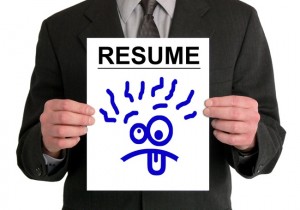#JobSearch : Résumé Formats to Play Up Your Strengths. You have Just over Seven Seconds to Make an Impression with your Résumé. Great Read!
You have just over seven seconds to make an impression with your résumé. That is the average time it took recruiters to make up their minds about candidates based on their résumés, according to a 2018 eye-tracking survey by the career site Ladders.
Professional résumé writers say you could try shaking up your résumé format if you are struggling to get callbacks.
1- Chronological résumé
The most common résumé format is chronological, listing your work experience in order, with the most recent experience at the top. It is straightforward, and many hiring managers prefer it because it is easy to understand.
How to format a chronological résumé
- Contact information: This should come first. Include your name, phone number, email address and location (city and state). You could also include the URL to your LinkedIn profile. Make it easy for hiring managers to reach you.
- Work experience: List your previous jobs in reverse chronological order, with the most recent at the top. Format each position in the same way so it is easy for the hiring manager to read. Include the employer’s name, location of the role (city, state), your job title, and start and end dates. If you are still in the job you can write, for example, “January 2020 to present.” If you had more than one role with an employer, make it clear as a subheading or another line under the company name. List three to five accomplishments under each job. See more tips here.
- Education: What you include here depends on your education history. If you didn’t attend college, recently graduated or are still in college, you may include your high school here. Otherwise, it usually isn’t necessary. Include the name and location of the college you attended, your degree and the years you were there. Recent graduates can also bulk up this section with their grade-point averages, although Ashley Watkins, a career coach and résumé writer with Write Step Résumés LLC, advises her clients not to include their GPA if it is below 3.5. Extracurricular activities and accomplishments can also go in this section.
- Additional skills: This section is a great place to put expertise that goes beyond a specific job or internship experience, such as other languages you speak and proficiency with certain software or other technology. You may also mention soft skills, such as the ability to work independently, a particularly useful asset if you will be working remotely.
- Certifications: If applicable, include professional licenses, technical courses or other certificates you have earned that are relevant to the job posting.
In most cases, résumé-writing experts say the chronological format is the way to go. “Overall, the chronological format is the most used format, and you don’t really see other formats too often nowadays,” says Demisha Jennings, a certified professional résumé writer, and founder and owner of She Assists LLC.
Like this Article? Share It!You now can easily enjoy/follow/share Today our Award-Winning Articles/Blogs with Now Over 2.5 Million Growing Participates Worldwidein our various Social Media formats below:
LinkedIn: https://www.linkedin.com/in/chris-g-laughter-b46389198/
Twitter: Follow us @ firstsunllc
Best Daily Choice: Follow the Best of FSC Career Articles/Blogs @
https://twitter.com/search?q=bestoffscblog&src=typeahead_click
Question: Want the ‘the best/current articles/blogs on the web’ on Job Search, Resume, Advancing/Changing your Career, or simply Managing People?
Answer: Simply go to our FSC Career Blog below & Type(#Jobsearch, #Resume, or #Networking) in Blog Search: https://www.firstsun.com/fsc-career-blog/
What Skill Sets Do You have to be ‘Sharpened’ ?
Article continued …
2- Functional résumé
If you don’t have much work experience and the chronological format is not working, you could try the functional format. This type of résumé prioritizes skills over direct work experience and can also be useful for those who have been out of the workforce for some time.
Think carefully about using this type of résumé. “From a hiring manager’s perspective, I find this to be less effective,” says Dana Leavy-Detrick, founder and director of Brooklyn Resume Studio. “They want to know what you did on the job even if it wasn’t directly related. Were there some kinds of transferable skills or experience?”
How to format a functional résumé
- Contact information: No matter the format, this should come first. Include your name, phone number, email address, location (city, state), and the URL to your LinkedIn profile, if appropriate.
- Summary: Start with a paragraph of three to five sentences that serve as your pitch to the hiring manager. Highlight the skills that qualify you for the job.
- Expertise: Identify the top skills you have that relate to the job you want and make a section for each. For a coding job, you could title a section “Programming Languages,” and list the ones you are proficient in. Under a “Customer Service” section, in bullet points, you could list the total number of orders you have processed and skills related to the role, such as communication, problem-solving and product or service expertise. You don’t need to say when or where you used the skills or accomplished the aforementioned responsibility.
- Experience: In a short section, list the company name, location of the job, your job title, and start and end dates. You don’t need to use bullet points to describe your accomplishments under each position.
- Education: If applicable, include the name and location of your college, your degree and the years attended.
- Certifications: List professional licenses, technical courses or other certificates you have earned that are relevant to the job posting.
Functional résumés often work best if you are sending your résumé to a person you have had contact with, as opposed to submitting through a job portal, which often will use an applicant tracking system, says Ms. Watkins. “Functional résumés work for direct contacts because you are there to have a conversation, the feedback is there, and they can put a person to the position,” Ms. Watkins says.
3- Hybrid résumé
Hybrid résumés combine the best parts of the chronological and functional formats. The hybrid format allows you to emphasize your skills, but also provides more context around your past work experience, says Ms. Leavy-Detrick, who favors the format and says it tends to give a “better picture of who the candidate is on the whole.”
How to format a hybrid résumé
- Contact information: Include your name, phone number, email address, location (city, state), and the URL to your LinkedIn profile, if appropriate.
- Summary: Similarly to the functional résumé, include a strong statement outlining your expertise, the types of employers you have worked with and your accomplishments.
- Skills: List your relevant expertise in bullet points.
- Select projects: If relevant to your desired role, you could add a section highlighting projects or campaigns you have worked on and what you achieved.
- Relevant professional experience: Focus on relevant duties when describing your work history. Elaborate on how you used the skills that you listed.
- Education: If applicable, include the name and location of your college, your degree and the years attended.
- Certifications: Just as with the chronological and functional résumés, you can list professional licenses, technical courses or other certificates you have earned that are relevant to the job posting.
WSJ.com | December 11, 2020 | Allison Pohle






